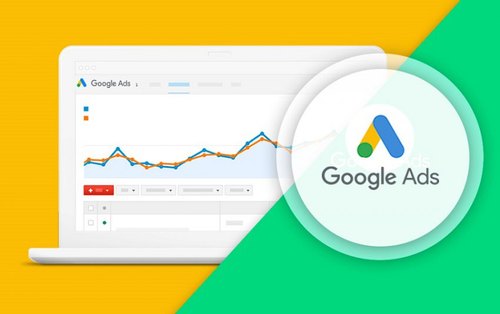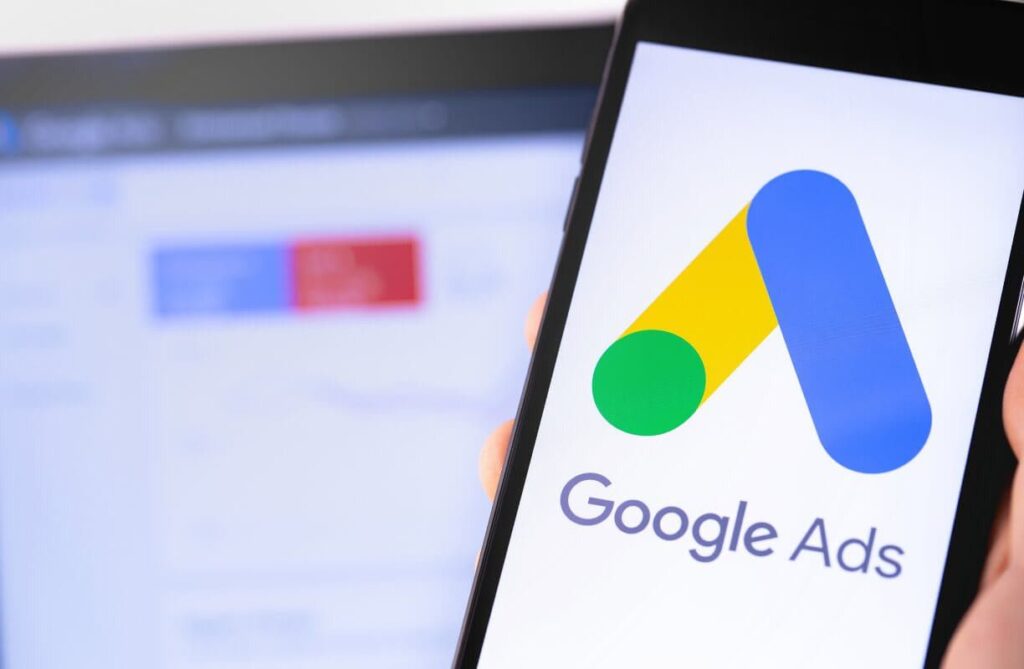Google Ads, earlier known as Google AdWords is not a lesser-known term in the digital space. Businesses that dream to make a prominent online impact and drive digital sales are aware of these terms associated with digital marketing. For those who do not know, Google Ads is an online promotional platform by Google, where the advertisers bid and display short promotional content in distinct formats. These ads can pop up on SERPs or websites on the internet and fall under the PPC model.
Table of Contents
ToggleUnderstanding Google Ads – In simple words

Google AdWords or, as the current term, Google Ads has come a long way since it got launched in 2000. Currently, the ads are available in multiple formats and can run on distinct platforms to attract the maximum crowd to a page. The system is based on search engine marketing mostly and targets the audience by analyzing the preferences and programmed metrics.
Google Ads are suitable for driving quality web traffic and converting them into consumers for a business. Thus, most businesses hire Google Ads management companies in India and increase their revenue generation opportunities online. The experts help them with different formats, content, bidding, campaign strategy, and other aspects. It is a sensible approach as it targets audience intent and thus, amplifies the chances of conversion.
In a nutshell – How do Google Ads Work?
The different Google Ads Formats operate on the PPC model, where the marketer picks a targeted keyword on Google and bids on it. The bids determine how much you have to pay for the ad.
An example for you – Suppose you have given the maximum bid as five dollars and Google determines that the cost for each click is priced below five dollars, you can place the ad. If Google had determined the cost per click more than five dollars, you would have missed the chance to place the ad. It is an over-simplified way to understand the bidding and working system for Google Ads. Practically, there are three different bidding techniques that determine the ad placement fate.
Besides CPC or cost per click, the other two types of bidding are – cost per mile (CPM) and cost per engagement (CPE). However, there is more to just bidding for successful ad placement. You have to secure a good Quality Score. What is Quality Score? It is the overall quality of your keywords, ads, and landing page. It is essential to have a high-quality score for ensuring better ad positioning at a cheaper rate.
Top Benefits of Google Ads

Why do you think businesses look for professionals having Google ads training? It is for the multiple benefits of Google Ads. With several ad formats and placement advantages, businesses can earn big time with the correct application of Google Ad campaigns and strategy.
- The reach is massive– With more than one Google Ads Format, it is easy to expand the reach and target the audience in multiple ways. The reach-volume is massive compared to other digital promotion ways as everyone uses Google for accessing the information on the web! It is the most trustable and popular search engine for the most internet users. Hence, placing a Google Ad on the search engine page exponentially increases the reach.
- Faster than SEO– Google Ads yields an efficient outcome on the digital visibility index compared to search engine optimization. It helps businesses earn better brand recognition as more people on the internet can see the displayed ads on the SERP. It is effective and efficient, hence highly beneficial for all businesses.
- Straight to the mailbox– Get straight inside the Gmail inbox of the internet user with Google Ads. Mobile Gmail ads and desktop Gmail ads are highly effective in gaining instant attention. Also, the price is lower than regular search ads, making it apt for small-scale businesses.
- Ease of reconnecting– Remarketing Google Ads means retargeting and reconnecting with website traffic. Anyone who visits your webpage but does not convert is considered a potential target for remarketing google ads. It increases the chances of conversion and thus positively impacts revenue generation.
- Consistent monitoring and measurement– With the different Google Ads Format, you can transparently measure the success rate. You can retrieve information like – the number of clicks, generated leads, traffic from AdWords, etc. Thus, monitoring is easy for determining scaling requirements.
- Influence and outrank– Repeated ads on SERP, Gmail inbox, and other platforms, based on user preferences and intent makes an excellent impact on the sales drive. You can earn an edge over your competitors by placing the ad wisely.
- Efficient testing and dynamicity – Google Ads are efficient as they can be easily reviewed and monitored. Alter the campaigns, keywords, and ad format by understanding the operational success of the ad. The dynamicity of these ads allows businesses to perform optimally.
Understand the anatomy of elementary Google Ads
There is more than one Google Ads Format, but the basic structure is constant. The structural components help in segmenting the ad and in a way, determine the suitability. Understand the different parts of the ads before reviewing the formats.
- Headline: The heading in the ad is the primary tool that attracts the eyes and creates a response! The headline encourages the user to act and convert, by sending a promotional message on behalf of your brand. Google ads expert in India carefully reviews the headlines before running a campaign to generate the best impact and amplify conversion rate.
Sub-headline – The sub-headline may or may not be part of all ads you see on the web. It assists the headline and informs the key-selling pointers of the featured product. Most marketers use it to help the viewer get a better idea of the product in concern. There can be two sub-heads.
Example – Boots Collection | Genuine Leather | Free Shipping. Here, the three parts represent one main headline and two sub-headlines respectively.
- Description: The description or body of the ad informs the viewer about the product. It can be product benefits, pricing info, or customer testimonial. Viewers get attracted to the positive benefits and compelling features and click on the ad. Making a crisp and impactful ad description is crucial for high click rates.
- URL: The URL is the final part that takes the viewer to the landing page or product page. The display URL needs to be short and rightly match the provided description. If there are inconsistencies, it impacts your Google Ads Quality Score negatively.
Types of Google Ads Format
- Text ads: Text ads are the most-commonly seen advertisements that only contain promotional text. These are quick and easy to read. They get placed on the top or at the bottom part of the google search result page. It contains the to-the-point info about the promoted product or brand. One can make the text ads different from the rest by adding information through extensions, like website links, business addresses, etc. It is the cheapest among the different formats and does not require much expertise to develop. But, as most businesses use it, the chances of gaining quality leads are tough.
- Image ads: Image ads are more interactive compared to text advertisements. There can be static or interactive graphics (gifs) or flash images. These image ads are visually appealing and quickly catch the attention of the viewer. You can instantly exhibit the product you are promoting with an attractive image. You can promote the image apps over 2billions websites and apps on the Google Display Network. Ecommerce businesses mostly utilize these image-based ads to make the most significant impact.
- Video ads: Video ads or mostly YouTube ads are currently among the top-performing ads. Video ads do not only restrict to the YouTube network and thus get featured on other websites and apps as well, for being a part of the Google Display Network. These ads can appear at any time point while playing a video. Usually, they get placed at the beginning to ensure maximum visibility. They may or may not be skippable.
- Responsive ads: These ads are dynamic and use AI technology. The ads can change the size and format as per the appearing platform or website. Responsive ads can have text and images. It may be a square or a rectangular-shaped ad box. The placement area is also not constant as it can appear on the top, bottom, or mid-part of a website. Usually, these ads are a combination of logo, description, product image, and headline.
- Product shopping ads: The product shopping ads can appear anywhere on the Google search page, image search page, and the Google shopping page. These include the product image, price, and store link alongside a heading. You can add more info like – rating, customer review, etc., that defines the product. These are excellent for product-based businesses.
- Showcase shopping ads: The showcase shopping ads are a better version of regular product ads where you can exhibit multiple products. You can group related products and showcase them to the customer. The concept resembles the name of the ad format, and the viewer can browse the lineup presented on the ad. It is a categorical promotion of products to engage the viewer and convert them.
- Call-only ads: As the name suggests, these ads urge the viewer to give you a ring! These appear on smartphones and digital devices capable of making a call. The viewer can instantly make a call through Google Forwarding Number (GFN). Also, there are extensions with this format. The simple call-only ads are particularly beneficial for service-based businesses.
- App promotion ads: App promotion ads get displayed on multiple platforms like Google Play, YouTube, Google Discover, Search, etc. These formats drive app download rates and engagement by targeting a massive audience. The promoted ads are relevant to the content and, thus, user engagement gets high.
Few pro tips for a simple website and e-commerce website

Professionals with Google ads training and in-depth knowledge of the different ad formats can bring the best ideas for websites and e-commerce sites. The ultimate goal is to drive sales and increase brand awareness. So, it is essential to implement a PPC strategy that brings quality traffic, increases clicks and impacts revenue.
- Understand the traffic you are targeting before you get into the PPC model. Especially for e-commerce websites, it is necessary to determine the target range first.
- Use multiple ad formats to amplify visibility on several platforms. It increases brand credibility and improves the outcome of remarketing techniques.
- Research your competitor’s strategy and develop a tailor-made plan based on the best sale-driven approach. Determine a balanced budget to ensure maximum ROI.
- Besides investing in the Google Ads Format and other PPC campaign expenses, ensure to make the landing page attractive. It must feature quality content and match the ad promises for fetching the best quality score.
Summing it up – Seek professional assistance for the best output
No one other than a Digital Marketing Company in India can guide you in the best way, driving the expected outcome for your business through PPC. Find a professional in the digital marketing field to bring a positive impact on the business and brand with Google Ads.
Also Read = Why Your Business Need Strong Digital Marketing Strategy?
Also Read = LinkedIn Marketing Strategy: How to Market on LinkedIn
Also Read = 21 Sure Short Tips to Increase Website Traffic


